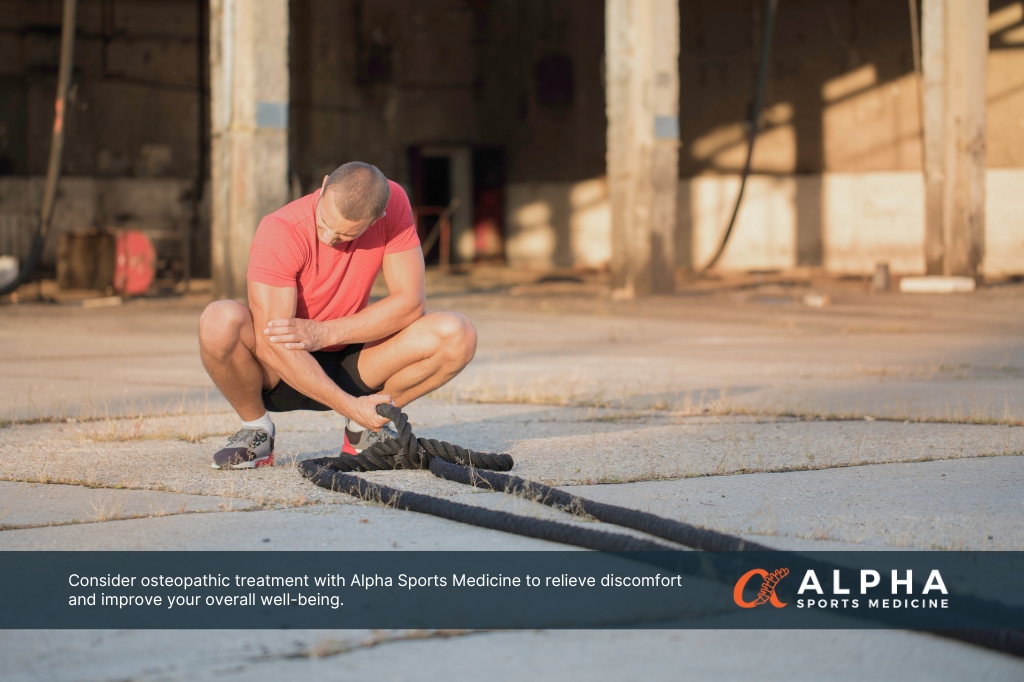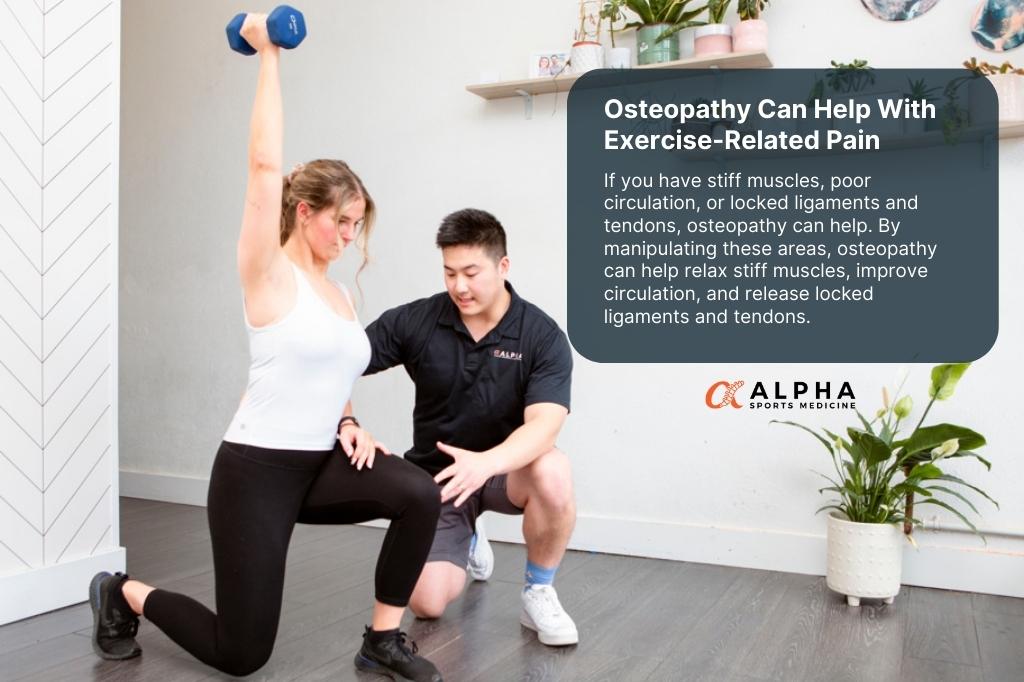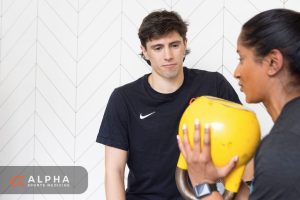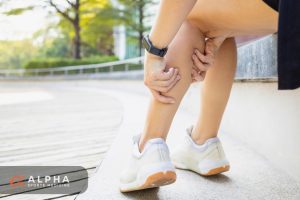After a rigorous workout at the gym, it’s common to experience muscle soreness that may make it challenging to move around with ease. This discomfort is normal and typically subsides within a few days.
Although rest and ice can provide some relief, if the pain persists or worsens, it’s advisable to seek the assistance of an osteopath.
These professionals employ a range of methods to alleviate muscle tension and soreness. Continue reading if you’re curious to learn more.
What is muscle soreness?
When you exercise, your muscles experience strain, which can lead to muscle soreness. This is called Delayed Onset Muscle Soreness (DOMS) and is a normal condition. Typically, DOMS occurs 6-8 hours after starting or changing a new activity and can last up to 24-48 hours after the workout.
Athletes often experience muscle soreness, especially after high-intensity workouts. This soreness is caused by inflammation in the muscle cells because of the stress placed on them during exercise.
The muscle fibres break down and then rebuild, becoming stronger than before. This means your muscles will be better prepared to handle the strain of future workouts.
Common causes of muscle soreness
- Starting a workout routine after a long break or beginning a new exercise or training program.
- Introducing a new activity or exercise into your fitness regimen.
- Increasing the intensity of an exercise already part of your program, using heavier weights, doing more reps, or working faster.
- Engaging in repetitive activities without taking sufficient rest intervals.
What reduces post-exercise muscle soreness and stiffness?
-
Apply an ice pack
If the injury is severe or the muscle or joint area is swollen and warm, wrap an ice pack in a thin towel and apply it to the affected muscles for approximately 15 minutes. However, if there is no swelling and the muscles are simply sore from exercising, you can use a heat pack for 15 minutes to enhance blood circulation.
-
Maintenance Treatment
If you have tight and stiff muscles that are causing discomfort, you may find relief from a trigger point or sports massage. These types of massages can help you to relax and alleviate muscle aches.
-
Stretch
To prevent muscle soreness, it’s important to stretch for 10-20 minutes after strenuous activity. Before exercising, warm up your body with dynamic stretching or arm swings and on-the-spot marches, or start slowly and gradually increasing the pace.
-
Keep moving
It’s important not to stop exercising altogether. Feeling muscle soreness after a workout means your muscles were challenged and will eventually become stronger. To help clear lactic acid buildup, try engaging in light activity to activate your muscles.
-
Gradually increase the number of eccentric exercises
If your muscles operate eccentrically, you will likely experience muscle aches. This happens when your muscles contract under tension, as in the “down motion” of a bicep curl or when walking or jogging downhill. To avoid injuries, gradually increasing the intensity of your workout is essential.
-
Take a hot bath
Indulging in a comforting warm bath can effectively solve discomfort caused by tensed muscles and poor blood circulation. Add Epsom salts; the experience can provide temporary yet gratifying relief.
-
Foam roll
Foam rolling is a technique for self-myofascial release that can safely and effectively relieve tension, tightness, and muscular pain.
When to consult an osteopath
If your muscular aches persist even after resting for a few days or it becomes worse, it could be a sign that you have sustained a significant muscle injury.
Consult an osteopath if any of the following symptoms accompany your muscle soreness:
- Trouble with breathing
- Having a high fever
- Muscle tremors or weakness
- A rigid neck
- An unusual dark urine colour or diminished urine production
- Severe, agonising pain
- Limbs with exorbitant swelling
- Joint immobility brought on by severe edema

Does osteopathy help tight muscles?
If you have stiff muscles, poor circulation, or locked ligaments and tendons, osteopathy can help. By manipulating these areas, osteopathy can help relax stiff muscles, improve circulation, and release locked ligaments and tendons.
If you want to improve your recovery time, an osteopath can help by easing muscle tension and enhancing blood flow.
Our team of osteopaths will collaborate with you to pinpoint any muscle imbalances you may have. They will then prescribe exercises to alleviate these imbalances and loosen tight muscles.
Final thoughts on how osteopathy can help with exercise-related pain
If you experience severe muscle soreness while exercising, it may indicate a muscle strain or injury. Osteopathy is a type of natural medicine that uses gentle massage and manipulation techniques to restore balance and function to the body.
Consulting with an osteopath can help alleviate muscle tension, soreness, and pain caused by overuse injuries.
Don’t suffer in silence when dealing with chronic muscle soreness after workouts. Consider osteopathic treatment to relieve discomfort and improve your overall well-being.
Book an appointment at Alpha Sports Medicine and experience the tremendous relief of osteopathic treatment.
Author
-

Dr. Ashton Wilson began her studies with a three year Bachelor of Biomedical Science, where she majored in Anatomy and Physiology. She then switched to a more hands on approach, where she completed a three year Bachelor of Clinical Science and a two year Masters of Osteopathy. Ashton has since completed further education and is a qualified Strength and Conditioning Coach as well as a Kinetic Link Trainer.
View all posts







